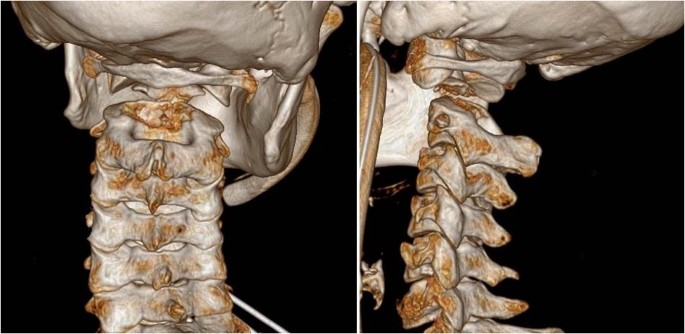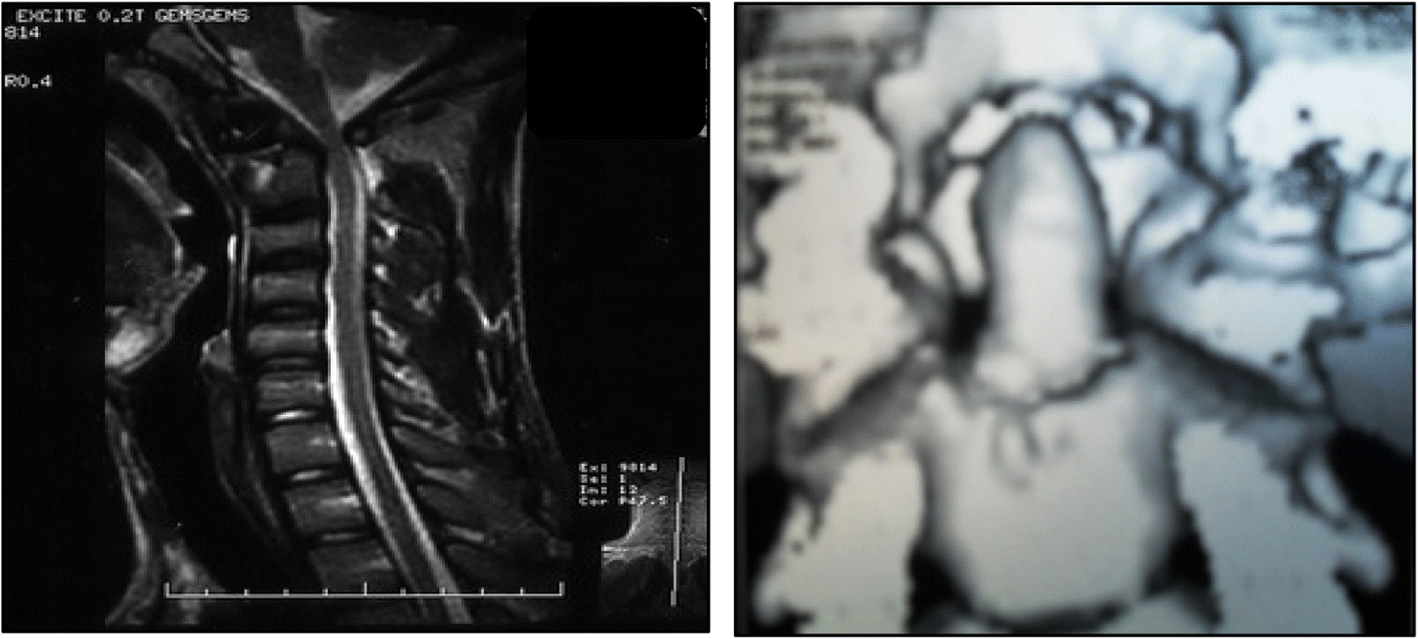

Treatment depends upon on where the fracture occurs within the second vertebre. Doctors are concerned for spinal cord compression if the spinal canal (which is where the spinal cord travels within the spine) is narrower than 1 cm. When looking at a spine with this type of injury, its important to evaluate the space for the spinal cord, to ensure the broken bone is not compressing the spinal cord. The injury is diagnosed with x-rays, but often a CT scan is used to better understand the pattern of the broken neck bone. Its uncommon for someone with this injury to have neurologic injury, its usually pain that patients reports. How is an Odontoid Fracture diagnosed?Ī patient with this type of fracture comes in after a whiplash type injury complaining of worsening neck pain. A type 2 fracture is a break at the base of the dens, and a type 3 fracture is when the break goes into the main portion of the second vertebre. Its due to an avulsion of a ligament called the alar ligament (an avulsion means the ligament is ripped off the bone and actually pulls part of the bone off with it). A type 1 fracture occurs when just the tip that breaks. This bump is a weak link in the spine and can break. This particular vertebre has a unique structure and there is a bump that forms a joint with the first vertebre. If you over extend your neck, the vertebre shifts backward, if you over flex your neck then your vertebre shifts forward. The 2nd vertebre can be broken after a whiplash type injury (your neck is hyper extended or hyper flexed). The mechanism of injury is variable, and can occur both during flexion or extension with or without compression 5.What is an Odontoid Fracture? The odontoid (also known as the “dens”) is the second vertebre in your neck (you have a total of 7 vertebre in the neck, another 12 in the thoracic spine and 5 in the lumbar spine). Odontoid process fracture, also known as the peg or dens fracture, occurs where there is a fracture through the odontoid process of C2. When does a peg or dens fracture occur?ĭr Mohammad Taghi Niknejad and Dr Jeremy Jones ◉ et al. If an abnormality is present, a CT or MRI of the head and c-spine can more definitively determine the type of dens fracture. If starting out with basic radiographs, you would assess by doing an open mouth or odontoid view. Types II & III are commonly treated with a halo vest or surgical fixation. What should I do if I have a dens fracture? The dens is displaced slightly posteriorly on the body of C2. The red arrow points to the same fracture of the sagittal reformatted image. The green arrows point to a transverse fracture of the base of the dens (odontoid) (Type II). These are two reformatted CT images of the cervical spine. A type III fracture passes through the body of C2 [ 4 Where is the fracture of the dens on the cervical spine?įracture of the Dens. A type I fracture involves only the proximal tip of the odontoid process, while a type II fracture, like our patient’s, passes through the base of the odontoid process. Discussion Dens fractures are classified as type I, II, or III. How are dens fractures classified in the body?ģ. This makes them the most likely to require surgery. Type II fractures are considered the least stable of the odontoid fractures.

In an unstable fracture, the bone is more likely to move out of its normal position and alignment. Can an Odontoid fracture heal on its own?Ī stable fracture may “set” and heal itself. Traditionally, C2 fractures have been treated either conservatively, often with cervical immobilization2 by halo-bracing or collar, or operatively. In these cases, posterior instrumentation or fusion of C1 and C2 is favorable. The technique is demanding and leads to elevated complication and failure rates if modifiers are apparent. Unstable and/or dislocated displaced odontoid fractures are treated by anterior osteosynthesis with 1 or 2 screws. Most consider a type I odontoid fracture a stable fracture and treat for six to 12 weeks in a rigid cervical orthosis (hard cervical collar). How long does a dens fracture take to heal? 11 When does a peg or dens fracture occur?.10 What should I do if I have a dens fracture?.9 Where is the fracture of the dens on the cervical spine?.8 How are dens fractures classified in the body?.7 Can an Odontoid fracture heal on its own?.4 What ligament holds the dens in place?.1 How long does a dens fracture take to heal?.


 0 kommentar(er)
0 kommentar(er)
